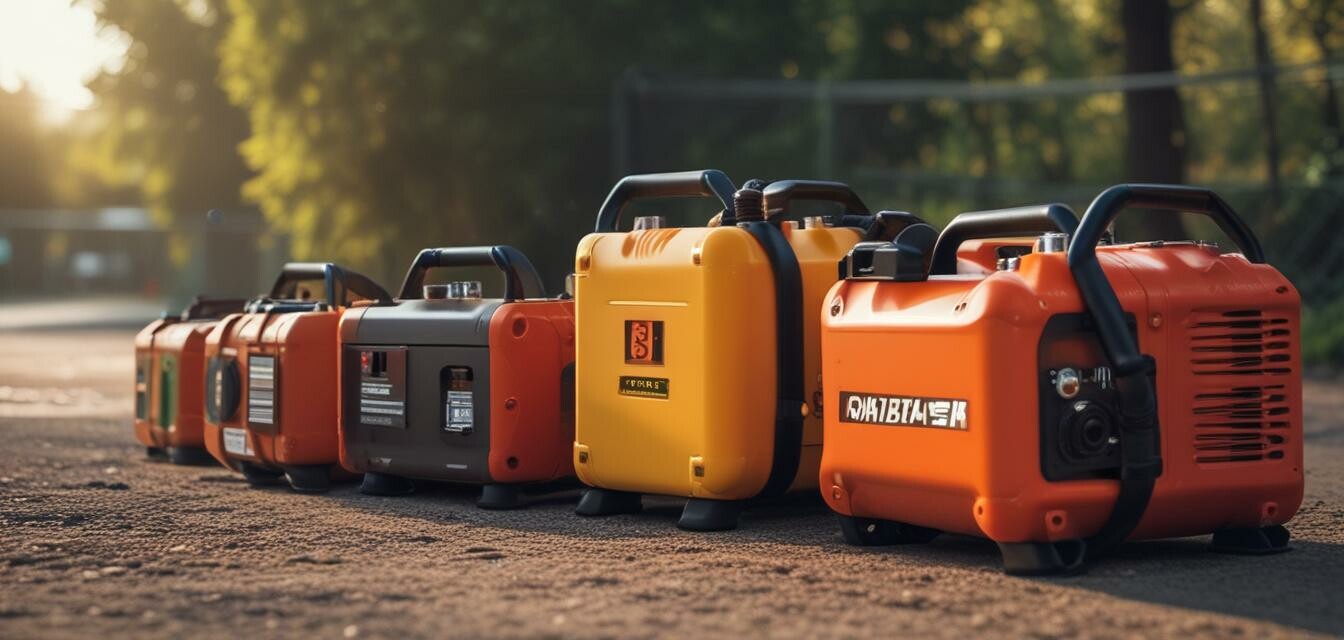
The ultimate guide to portable air compressors
Key Takeaways
- Portable air compressors come in various types and sizes, suitable for different applications.
- Consider the power source, PSI rating, and tank size when choosing an air compressor.
- Understand how to properly maintain your compressor for optimal performance.
- Look for features such as noise level, weight, and ease of use to fit your specific needs.
Portable air compressors are essential tools for both contractors and DIY enthusiasts. Whether you're inflating tires, powering nail guns, or cleaning surfaces, the right compressor can make your tasks faster and easier. This comprehensive guide will dive into the different types of portable air compressors, their features, and how to choose the ideal one for your needs.
Types of Portable Air Compressors
There are several types of portable air compressors, each suited for specific tasks. Here's a breakdown:
| Type | Description | Best Uses |
|---|---|---|
| Pancake Air Compressor | Flat, round tank shape makes them easy to transport. | Nailing, inflating, and powering air tools. |
| Hot Dog Air Compressor | Long, cylindrical tank design, often lighter. | Various DIY projects and small tasks. |
| Rotary Screw Compressors | Ideal for continuous use, these are more heavy-duty. | Industrial applications and automotive work. |
Choosing the Right Size
When selecting a portable air compressor, size matters. Here are key factors to consider:
- Tank Size: Generally, a larger tank provides longer runtimes but adds weight. Choose a size based on your needs.
- Portability: Ensure the compressor is easy to carry. Lightweight models are beneficial for on-the-go tasks.
- Power Source: Options include corded electric and battery-operated units. Evaluate which works best for your environment.
Featured Products
DEWALT Air Compressor for Trim
This portable air compressor features a durable oil-free pump and low noise operation, ideal for trim work and quick recovery.
Learn MoreMaintaining Your Air Compressor
Proper maintenance extends the life of your air compressor. Here’s how to keep it running smoothly:
- Regularly check the oil and change it if needed.
- Drain the tank after each use to prevent rust and moisture buildup.
- Inspect the hoses and connections for leaks.
- Use the right type of air filter and clean it periodically.
Noise Level Considerations
Noise is a significant factor. If you’re using your compressor in a residential area, consider models with a lower decibel rating.
Comparison of Noise Levels
| Model | Noise Level (dB) |
|---|---|
| DEWALT Air Compressor for Trim | 71.5 |
| Metabo HPT Air Compressor | 73 |
| ECOMAX 6 Gallon Air Compressor | 82 |
Utilizing Accessories
Many portable air compressors can be enhanced with accessories like:
- Hoses: Choose the right length and diameter for your needs.
- Regulators: Control the pressure of the air delivered.
- Connectors: Ensure compatibility with your tools.
Featured Product
Metabo HPT Air Compressor
This pancake air compressor offers 25% more PSI, 30% more airflow, making it perfect for heavy-duty nailing.
Learn MoreConclusion
Portable air compressors are invaluable tools for any contractor or DIY enthusiast. With a variety of types and features, understanding your specific needs can help you select the right compressor. Consider factors like size, power source, and maintenance to optimize your performance and ensure longevity in your projects.
Pros
- Versatility for multiple tasks.
- Portability allows for easy transport.
- Simple maintenance with oil-free models.
Cons
- Can be noisy depending on the model.
- Limited runtime based on tank size.
- Requires periodic maintenance for optimal performance.
ECOMAX 6 Gallon Portable Air Compressor
Lightweight design and high efficiency makes this compressor perfect for various pneumatic tasks.
Learn MoreLearn More
For additional insights and product comparisons, explore our other guides:
- Portable Air Compressors Resource
- Buying Guides
- Power Tool Accessories
- Impact Drivers
- Cordless Drills




